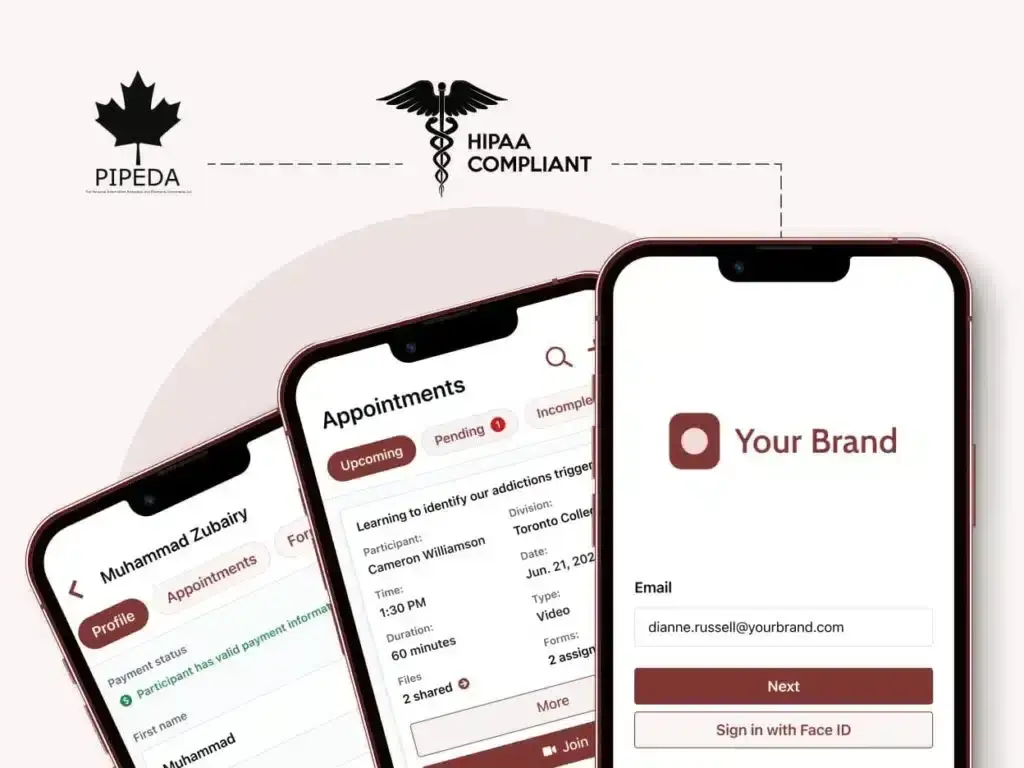Getting Compliant with the 21st Century Cures Act: There’s No Time to Waste
If you’re part of a behavioral health organization, the year ahead presents critical deadlines for compliance with the 21st Century Cures Act. You face mounting pressure to rethink and redesign systems and workflows to meet a plethora of new legislative mandates, all with still-evolving timelines and rules. Understanding all the implications can be daunting.
Let’s explore what the 21st Century Cures Act seeks to accomplish, how it impacts your behavioral health company, providers, and patients, and how technology solutions you may already have in place—such as your electronic health record (EHR) and patient portal—can help you become compliant fast.
What is the 21st Century Cures Act?
To increase choice, access, and transparency for healthcare patients and providers, the U.S. Congress passed the 21st Century Cures Act in 2016. Industry leaders heralded this landmark legislation as a major step in empowering patients and providers to gain control of their medical information and healthcare decisions. It includes provisions to:
- Streamlines development and delivery of drugs and medical devices.
- Accelerates medical research.
- Addresses the opioid crisis.
- Improves access to mental health services.
- Guides the use of EHRs and health information technology (IT) to ensure interoperability and information access.
- How is the 21st Century Cures Act different from HIPAA?
You might think of the 21st Century Cures Act and the Health Insurance Portability and Accountability Act (HIPAA) as two aspects of the same issue: how a patient’s protected health information (PHI) should be safeguarded, and how it should be securely shared.
Enacted in 1996, HIPAA aims to restrict PHI from being disclosed without the patient’s prior consent or knowledge.
By 2016, the healthcare industry had gone through a period of rapid digitization, some twenty years later, many behavioral health organizations had already or were actively digitizing PHI and could make it securely accessible and shareable. Embracing the opportunities presented by technology adoption, the 21st Century Cures Act aims to empower patients to access their now-available data, by encouraging access to and exchange of electronic protected health information (EHI) to appropriate parties.

What impact does the 21st Century Cures Act have for behavioral health practitioners and providers?
Two of the most critical issues for behavioral health companies and their providers to address that are outlined in the 21st Century Cures Act are information blocking and the systems interoperability required to ensure that information flows securely and freely as needed.
Information blocking happens when someone or a process or procedure interferes with the required access, exchange, or use of EHI. It can be an unintended consequence of the way you design a system or document a process. Information blocking can also be intentional. Examples of information blocking might be if your procedures make it difficult or impossible for a patient to access their EHI in a timely manner, or for other authorized providers to access a patient’s EHI. Covered EHI can include most data in a patient’s charts, including billing records, treatment plans and progress notes (note that there are eight exceptions to the information blocking rules).
To prevent information blocking, the 21st Century Cures Act rules emphasize improving technology interoperability so that patients, providers, and payers can all gain convenient, free, and appropriate access to EHI, regardless of where that EHI originates.
Your EHR, Interoperability, and 21st Century Cures Act Compliance: What You Need to Know
By sharing information in a meaningful way, you can support safer transitions of care, reduce waste, lower costs, and improve efficiencies. Whether facilitating payments or coordinating treatment across multiple providers, the integration of technology systems like EHRs, a patient portal, and other telehealth software has become an essential—and much needed— part of everyday healthcare operations. Technology integration improves quality of care by helping providers access the information they need to deliver safe, effective, patient-centered treatment. For patients, technology integration makes it easy to not only manage and coordinate care from a patient portal, but gives patients access to appointment information, asynchronous care tools, and session notes that can improve their care and health outcomes overall.
How Qualifacts OnCall Health accelerate 21st Century Cures Act compliance with robust EHR interoperability
To meet compliance with the 21st Century Cures Act, as well as other mandates like the No Surprises Act, Qualifacts OnCall work to provide interoperable solutions across EHR, patient engagement, and telehealth needs. These solutions allow you to integrate your data and EHR with those of partner organizations such as labs, pharmacies, HIEs, and ACOs. Our robust framework of publicly available APIs meets the latest FHIR (Fast Healthcare Interoperability Resources) v4 standards and ONC Certified 2015 Edition, so you, your patients, and your payers can all gain secure access to read-only healthcare USCDI (United States Core Data for Interoperability) data via a smartphone app or other third-party platforms.
Your patient portal and 21st Century Cures Act compliance: what you need to know
A white label patient portal goes beyond EHI access. It’s your behavioral company’s way of engaging patients across the continuum of care, evolving your delivery model, and growing your business. For example, your portal can enable patients to connect with providers through video, instant messaging, or other means to provide access outside of scheduled sessions and to deliver care through additional and engaging channels. Patients can use your white label patient portal to access educational materials that reinforce the work done in therapy appointments or group therapy sessions. We know that engaging patients outside of traditional appointments helps them remain connected to their providers and care, increasing the likelihood of program compliance and completion. It even means that patients experience better outcomes, making them more likely to remain in remission.
Learn more about how OnCall and Qualifacts can help you achieve 21st Century Cures Act compliance fast while improving your quality of care, elevating the patient experience, and boosting outcomes for your company.
Book a Demo


